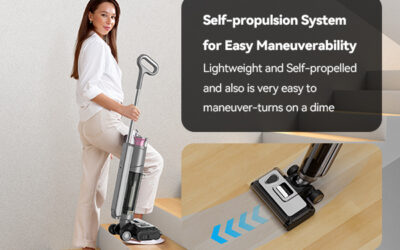In digital content creation, podcasting has become a potent platform for sharing ideas, stories, and expertise. Even though traditional audio podcasts have been popular for some time, there is a developing trend towards video podcasting. Video podcasts allow creators to interact with their audience visually, making the information more captivating and memorable. Step-by-step, we will examine the complexities of video podcasting in this exhaustive guide, enabling you to conquer this thrilling and dynamic medium.
Why Video Podcasting Matters in Chapter 1:
Before we delve into the technical aspects of developing a video podcast, it’s essential to understand why video podcasting is important and why you, as a content creator, need to consider it.
The Visual Advantage Humans are visual creatures by nature. Video podcasting enables more effective communication of information, emotions, and narratives through facial expressions, body language, and visual aids.
Video content attracts a more diverse audience, on average. The visual elements of video podcasts may attract individuals who do not typically listen to audio-only podcasts.
Monetization Opportunities: Video podcasts open up additional revenue streams, such as advertising, sponsorships, merchandise, and YouTube monetization, that audio podcasts may only partially delve into.
Enhanced Engagement: Video podcasts encourage viewer engagement via comments, favorites, and shares, thereby strengthening the sense of community surrounding your content.
Chapter 2: Video Podcast Planning
Selecting Your Specialty:
Define the niche or subject matter of your podcast. What distinctive viewpoint or expertise can you offer your audience?
The target audience: Identify your audience and adapt your writing to their interests and needs.s.
Determine the format of your video podcast’s content. Will there be solitary commentary, interviews, or panel discussions?
Content Schedule: To maintain a consistent publishing schedule, develop a content calendar.
Chapter 3: Obtaining the Appropriate Equipment
To create high-quality video podcasts, the most effective apparatus is required. This is a listing that meets your budget and requirements. You can purchase a smartphone with an above-average camera or buy a DSLR or mirrorless camera for significantly higher quality.
Choose a camera that fits your budget and requirements. You can begin with a smartphone with a decent camera or invest in a DSLR or mirrorless camera for superior quality. Electroacoustic microphones: Audio fidelity is indispensable. Invest in a decent microphone, such as a USB condenser or Lavalier mic.
Correct illumination is essential for video quality. Consider purchasing a softbox or ring lighting for your recording space.
Tripods and Stands: To avoid unsteady video and audio, stabilize your camera and microphone with tripods and stands.
Chapter 4: Establishing Your Recording Space
Creating an attractive and professional recording space is essential for the success of video podcasting. Here are some guidance:
Select a Quiet Place: Find a space with minimal ambient disturbance to ensure audio clarity.
Context and Decor: Create an aesthetically appealing background that reflects the branding or theme of your podcast.
Structure and Composition: Employing the rule of thirds, position your camera at eye level and frame yourself or your visitors effectively.
Experiment with various arrangements and illumination for the most favorable and aesthetically pleasing format.
Chapter 5: Recording Your Video Podcast and Editing It
Now that you have prepared your recording location, it is time to record your video podcast:
Scripting: Outline your episode’s content or prepare a script to remain on track during recording.
Editing Applications: Learn how to use video editing software such as Adobe Premiere Pro or Final Cut Pro to improve your video podcast’s visual and audio quality.
Including Visual Components: Include illustrations, images, and video snippets to enhance the visual allure of your podcast.
Chapter 6: Publish and Market Your Video Podcast
Your video broadcast is complete, but it will reach its full potential with effective promotion.
Choose a hosting platform such as YouTube or a podcast hosting service that supports video.
Optimize your video podcast’s title, description, and keywords for SEO to improve their discoverability.
Social Media Promotion: Distribute your video podcast across various social media platforms to increase your audience.
Engage Your Audience by Responding to comments and interacting with your audience to develop a devoted following.
Chapter 7: Success Metrics and Iteration
Video podcasting success is an ongoing practice. Monitor the efficacy of your podcast using metrics such as views, engagement, and subscriber growth. Utilize this information to make informed decisions and iterate your content, format, and marketing strategies.
The conclusion
Mastering the skill of video podcasting is a journey that combines the power of narrative, technology, and visual engagement. With the help of this step-by-step guide, you can create compelling video podcasts that captivate your audience and leave a lasting impression in the domain of digital article marketing. Obtain a digital camera, press the record button, and start discussing your unique perspective on the world through the innovative medium of video podcasting.






















